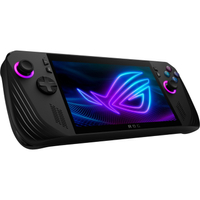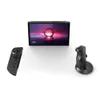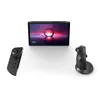I turned the Asus ROG Ally X into a Steam Deck — it proves Windows 11 kills power and battery life
Windows 11 should be nowhere near a gaming handheld, and we’ve got the numbers to prove it!
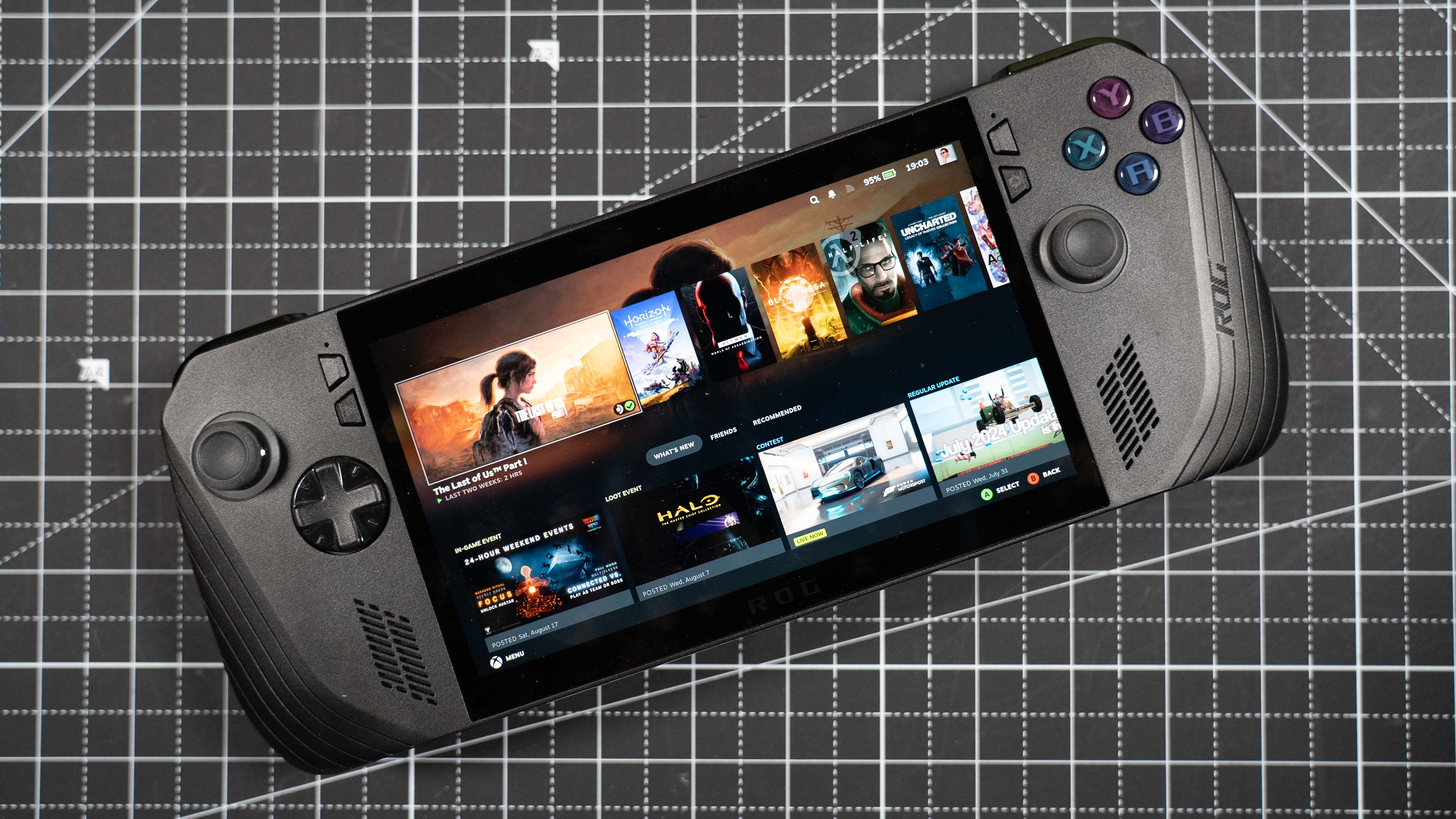
You may have spotted the news about Valve quietly updating SteamOS with back button support for the Asus ROG Ally X. This has quickly evolved from just a small update note to confirmation that the company will support this Windows 11 gaming handheld with its own handheld operating system, and based on my own testing, it can’t come soon enough.
Yes, I got impatient and decided to use a custom Linux image to get the Steam Deck’s operating system onto my ROG Ally X, and I was floored by the night and day difference in performance and battery life. In fact, I’m so shocked that it's confirmed what I’ve known all along — that this whole running Windows thing is just not the right thing for gamers on-the-go (at least for now).
I know the key benefit — you’re not just limited to Steam for games, and you get the freedom of choice between any game launcher from Epic to GOG. But is that even worth it with all the trade-offs we’re seeing? Is it worth it for a 15% drop in frame rates and a 22% reduction in battery life?
For portable gaming, we’ve been saying that Windows 11 is a problem. Our own exclusive testing proves that to be the case.
Asus ROG Ally X: $799 @ Best Buy
There's a reason why we call this the best premium gaming handheld. From its tweaked ergonomics and massively improved joysticks, to doubling the battery capacity and vastly increasing the RAM, Asus has listened to all our gripes about the original Ally and fixed them in this mean machine.
WARNING! Setup is a pain
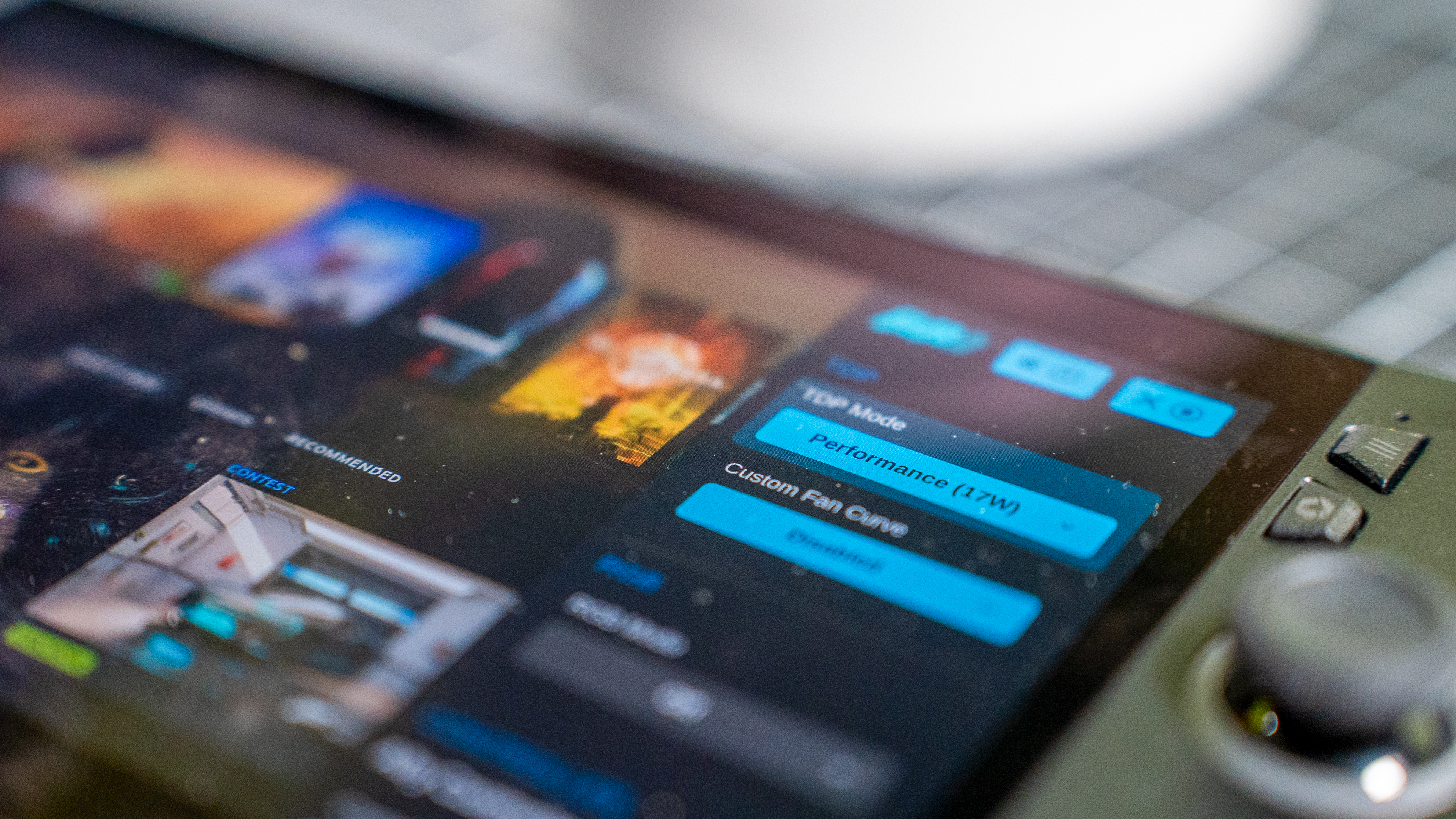
First, a quick disclaimer. After five hours of nearly pulling my hair out, I did eventually get the dual boot solution working.
I will be writing up a how-to guide on creating a boot drive with Bazzite, ensuring you’ve selected all the correct settings for the Fedora Atomic Desktop to work properly, and making sure you set up an admin user to be able to install everything needed.
But be warned. These steps are not necessarily going to work 100% of the time. Myself and other users have experienced different installation results — from working perfectly to just not installing whatsoever. And in those moments that it doesn’t install, the Fedora UEFI causes a conflict that no disk cleanup effort through the command line can fix. I’ve ended up having to completely wipe (via override) the whole SSD and start fresh twice to get to this point.
So unless you are a Linux expert (unlike me), I recommend you take this piece as inspiration for what may come down the line for the ROG Ally. Don’t put yourself through the same pain as I did, and wait for an official method to put SteamOS on your ROG Ally.
A joy to use (but you knew that already)
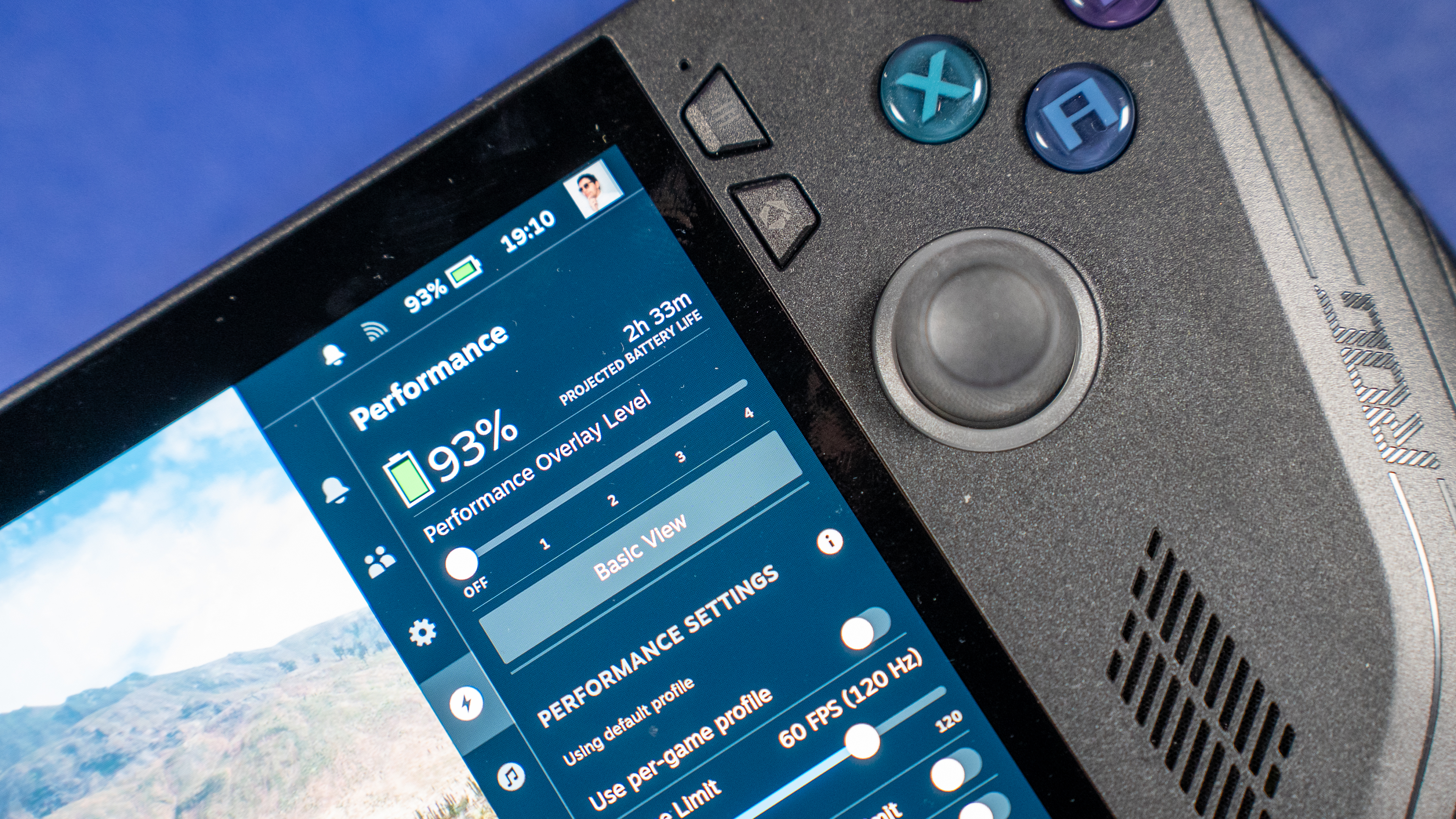
Let’s be honest — the whole using a Windows gaming handheld situation is a bit of a mess. My colleague Tony Polanco said it best when he said it “absolutely sucks.” Now to Asus’ credit, the team has worked hard to put a mask over it in the form of Armoury Crate.
With easy access to all the system settings, such as altering the Thermal Design Power (TDP) wattage going to the chipset, and even upping the amount of RAM dedicated to graphics, customization is a cinch. And on top of that, there is a nice-looking centralized game launcher that means you can easily jump into any installed games already on there.
But that’s the problem. You still need to interact with Windows 11, and on a 7-inch touchscreen, it’s a hassle to say the least. Trying to stuff a desktop OS onto a tiny device does throw up some insurmountable UI challenges, alongside some bigger strategic questions (example: who the hell wants a year of free Office 365 on a gaming handheld!?).
SteamOS just gives you all of what you need in its simplest form: system customization, a game library, and a game store you can interact with in the system (no desktop mode needed) — all in a super slick, easy-to-use interface that is the product of years of iteration.
Better by the numbers
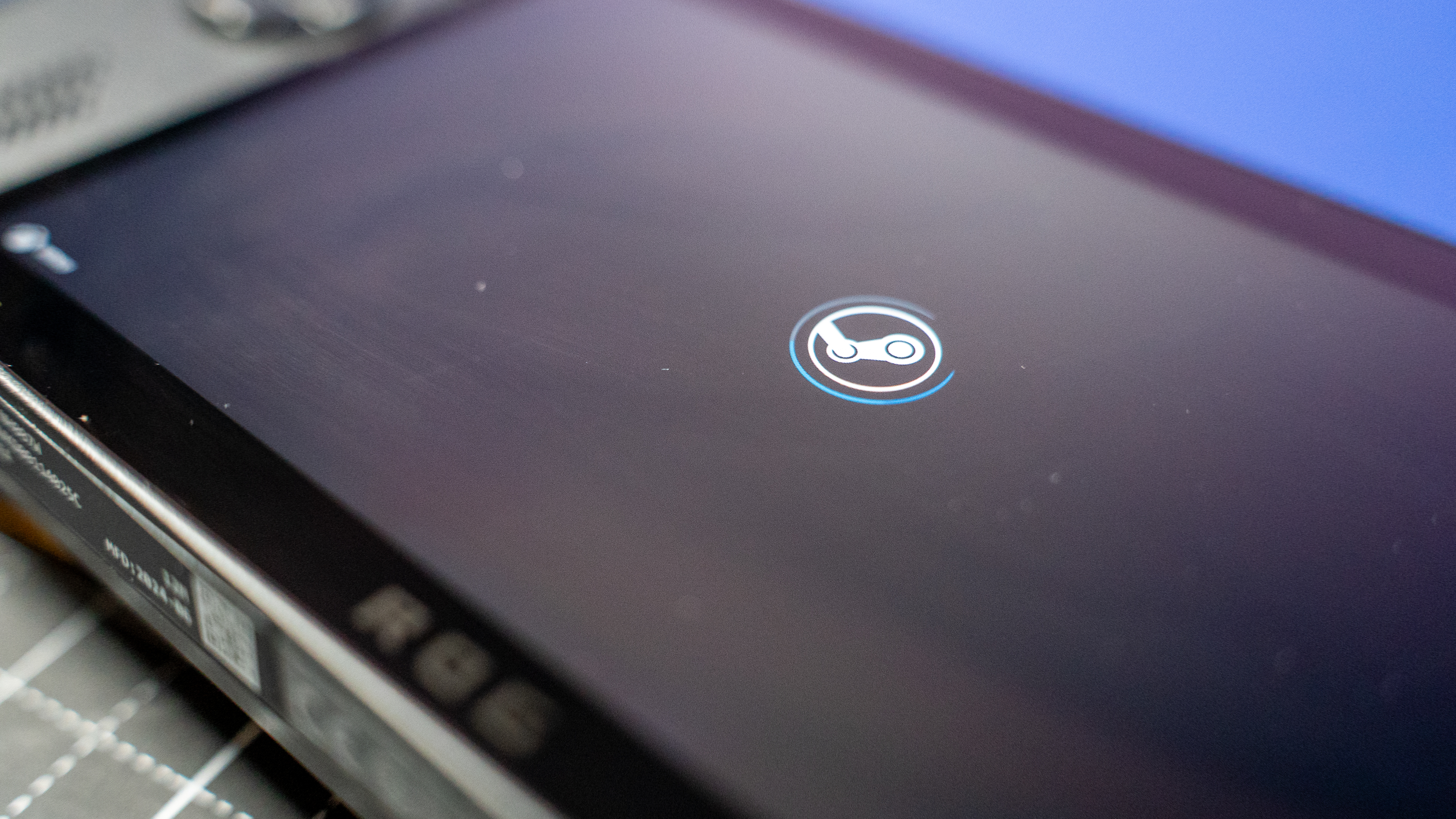
But of course it’s going to be a better UI experience for the players. One aspect I did not expect is just how much faster and power efficient the ROG Ally X is when running SteamOS. Literally, it’s an improvement in every single area.
| Game | Settings | TDP | Asus ROG Ally X (Windows 11) | Asus ROG Ally X (SteamOS) |
|---|---|---|---|---|
| Cyberpunk 2077 | 1080p medium preset with AMD FSR | Performance mode (15-17W) | 36 FPS | 42 FPS |
| Tetris Effect | 1080p medium - 120% scaling | Silent mode (13W) | 46 FPS | 61 FPS |
| Forza Horizon 5 | 1080p high preset with AMD FSR | Turbo mode (25-30W) | 53 FPS | 59 FPS |
That’s a big jump in frame rate across these three key games, which unfolded exactly the same for every other game I threw at it from Persona 5 and Dave the Diver, to Hitman 3 and F1 24. Oh, and for those keeping score, the gains over Steam Deck OLED are monumental.
| Game | Settings | Asus ROG Ally X (SteamOS) | Steam Deck OLED |
|---|---|---|---|
| Cyberpunk 2077 | 720p Steam Deck preset | 48.1 FPS | 29.93 FPS |
| DiRT 5 | 720p Medium | 63 FPS | 41.03 FPS |
Now, let’s turn our attention to battery life. Windows is a complex OS — especially when running on a not-so-power efficient x86 architecture. Asus has worked around this rather admirably by packing a giant 80Wh battery into the ROG Ally X, and it does go some way to relieving some of those longevity woes.
But do you know what goes even further than that? Using SteamOS. With a 20+% improvement in stamina, this becomes a long commute gaming king for any player.
| Game | Settings | TDP | Asus ROG Ally X (Windows 11) | Asus ROG Ally X (SteamOS) |
|---|---|---|---|---|
| Cyberpunk 2077 | 1080p medium preset with AMD FSR | Performance mode (15-17W) | 02:31 | 03:05 |
| Tetris Effect | 1080p medium - 120% scaling | Silent mode (13W) | 03:12 | 03:46 |
| Forza Horizon 5 | 1080p high preset with AMD FSR | Turbo mode (25-30W) | 01:26 | 01:44 |
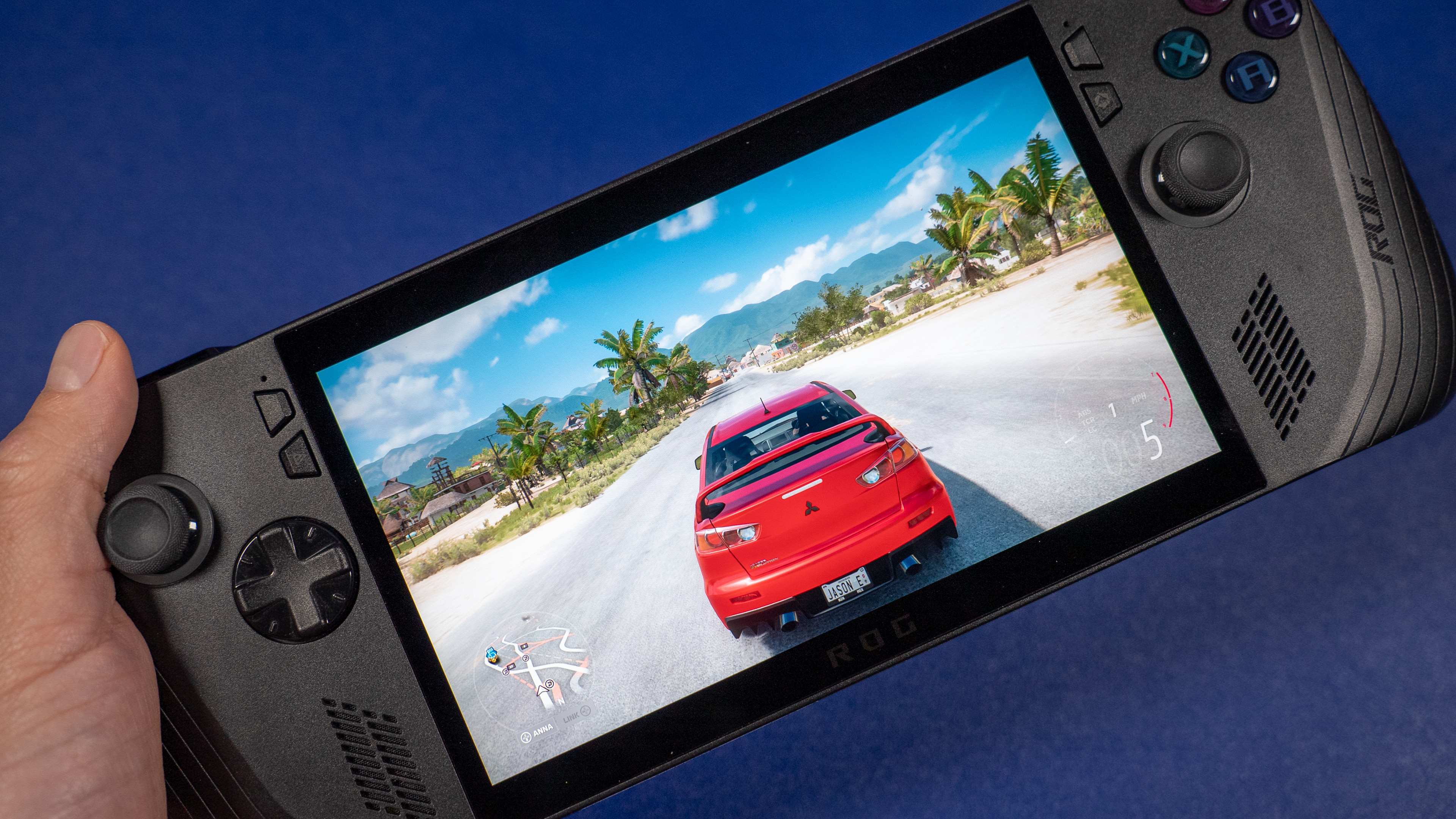
Windows 11 standby battery drain is also a common problem across laptops, and one that users have been feeling on handhelds too. Say you’re on a flight and you take a break from playing games to have a meal — you’d hope to clinch on to whatever precious stamina you have, but Microsoft’s standby mode is a weirdly taxing process that can seep away at the life-source.
| System | Standby battery drain (6 hours) |
|---|---|
| Asus ROG Ally X (Windows 11) | 8% |
| Asus ROG Ally X (SteamOS) | 2% |
That much is true here too for the ROG Ally X, and while there is still some small drain with SteamOS in the mix, it’s nowhere near as bad.
The PC gaming handheld war is over before it even started
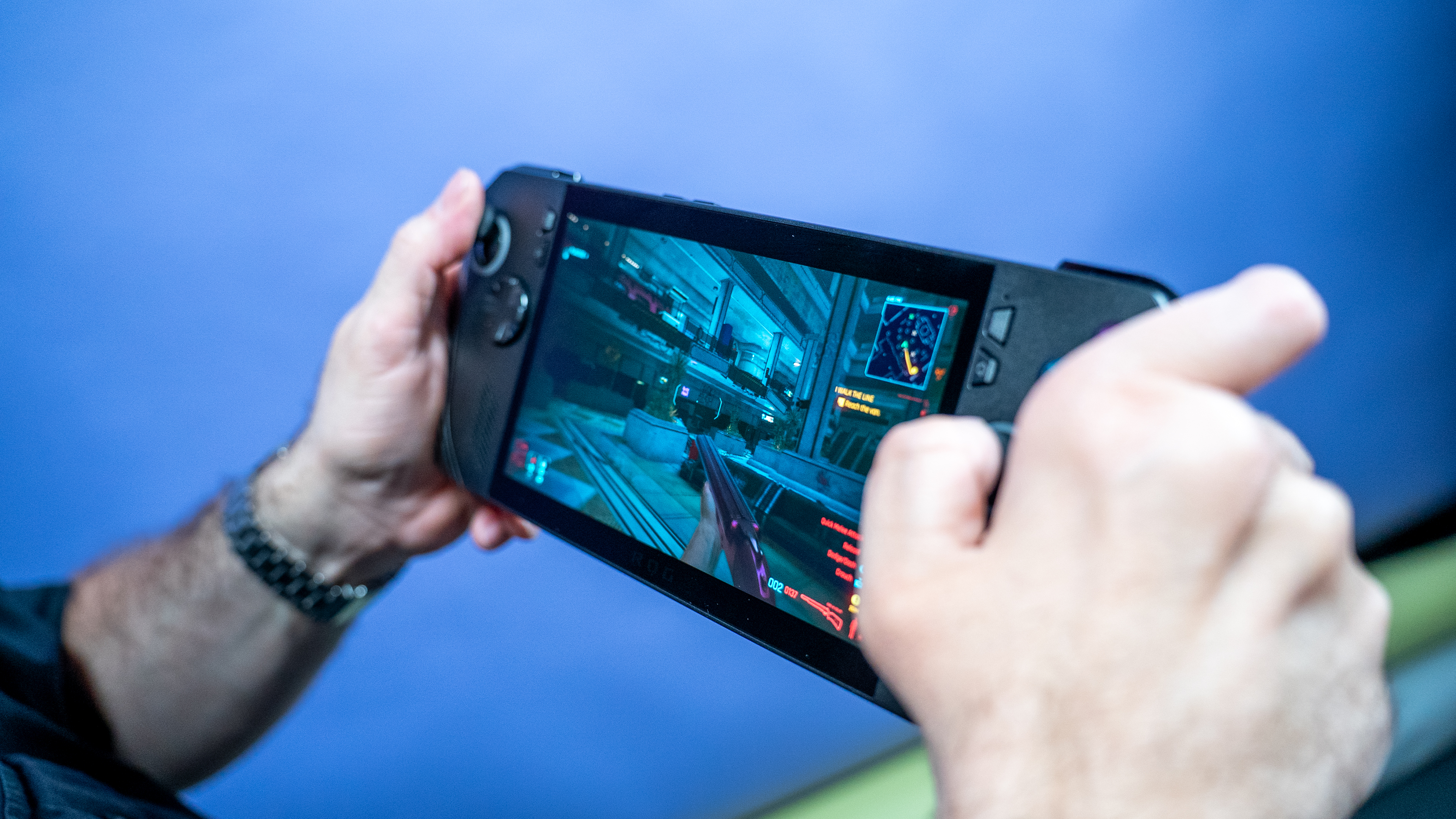
I’ve seen a lot of talk about the PC gaming handheld war — how it’s becoming a straight shoot-out between Windows options and the Steam Deck. But with stark differences in not just the usability but performance and battery life, this war is over before it's even begun.
Either Microsoft makes a handheld version of Windows that is actually logical to use, or Redmond never leaves the starting gate in its hopes to take on Valve. That openness of choice to install from any service is a small nice to have that brings with it a ton of buyer’s remorse that harms the three key things every handheld gamer needs: performance, battery life, and a UI that just gets out of the way of your games.
And with SteamOS officially being available soon for the ROG Ally, based on the test results we’re seeing, you’d be mad if you didn’t choose to take the red pill and breathe new life into your machine by turning it into a vastly more powerful Steam Deck.
More from Tom's Guide
- Steam Deck OLED vs Asus ROG Ally X: Which gaming handheld should you buy?
- Lenovo Legion Go could get two new models, including smaller 7-inch version
- The best handheld gaming consoles in 2024
Sign up to get the BEST of Tom's Guide direct to your inbox.
Get instant access to breaking news, the hottest reviews, great deals and helpful tips.

Jason brings a decade of tech and gaming journalism experience to his role as a Managing Editor of Computing at Tom's Guide. He has previously written for Laptop Mag, Tom's Hardware, Kotaku, Stuff and BBC Science Focus. In his spare time, you'll find Jason looking for good dogs to pet or thinking about eating pizza if he isn't already.
-
mistawankas lol. Anyone with both a Steam Deck and Rog ally knows this article is nonsense to get clicks. If somehow you are breaking the laws of physics and watts are magically higher on windows, you would win prizes. Linux isn't there yet. Not even close. It might be in another decade but not yet. Windows 11 is leaps ahead and only those tech illiterates could make it not the best option for handhelds.Reply -
Siruker Reply
While gaming on linux has its issues it has come long way on steam deck and if you are any bit more technical minded you can get gog and even epic games working on linux without major issues or hurdles. No linux does not increase wattage but because it doesn't have as much background stuff going on it can dedicate more power and system resources to the game thus improving both performance and battery power. Personally havent run into anything that cant run on linux. But I wouldnt play competitive shooters on steamdeck anyway.mistawankas said:lol. Anyone with both a Steam Deck and Rog ally knows this article is nonsense to get clicks. If somehow you are breaking the laws of physics and watts are magically higher on windows, you would win prizes. Linux isn't there yet. Not even close. It might be in another decade but not yet. Windows 11 is leaps ahead and only those tech illiterates could make it not the best option for handhelds. -
colossusrageblack Reply
I agree that Linux isn't there yet. However, it's very plausible that Windows uses more power considering it's running the CPU and utilizing more memory for background tasks. Windows 11 is not leaps and bounds ahead either. It's maybe two or three steps.mistawankas said:lol. Anyone with both a Steam Deck and Rog ally knows this article is nonsense to get clicks. If somehow you are breaking the laws of physics and watts are magically higher on windows, you would win prizes. Linux isn't there yet. Not even close. It might be in another decade but not yet. Windows 11 is leaps ahead and only those tech illiterates could make it not the best option for handhelds. -
Nikfra Reply
What laws of physics and what magic? Anything but a higher wattage on windows would be a miracle, everyone knows that the overhead on windows is massive compared to pretty much any Linux distro and it has been for years if not decades.mistawankas said:lol. Anyone with both a Steam Deck and Rog ally knows this article is nonsense to get clicks. If somehow you are breaking the laws of physics and watts are magically higher on windows, you would win prizes. Linux isn't there yet. Not even close. It might be in another decade but not yet. Windows 11 is leaps ahead and only those tech illiterates could make it not the best option for handhelds. -
jams3223 Bazzite is on the latest bleeding edge Kernel and Graphics driver and the Steam Deck is still on a old one, the performance difference won't be this big in real life if both devices are running the same OS, if both devices are running windows it's only a 1.3x performance improvement on the ROG Ally X.Reply -
Bruh8 Reply
We already have stats on it. Steam os provides no performance or battery life uplift with these handhelds, sometimes it is less due to no driver support.Nikfra said:What laws of physics and what magic? Anything but a higher wattage on windows would be a miracle, everyone knows that the overhead on windows is massive compared to pretty much any Linux distro and it has been for years if not decades.
xzQjaTScWsMView: https://youtu.be/xzQjaTScWsM?si=1P8dI43Q0fHbZF8e -
Bruh8 Reply
The battery life is negligible on both, the limiting factor is the chipsets themselves, not “windows”. The biggest issue is the z1 extreme is designed to go from 15-28 watts whilst the steam deck is designed for 3-15.colossusrageblack said:I agree that Linux isn't there yet. However, it's very plausible that Windows uses more power considering it's running the CPU and utilizing more memory for background tasks. Windows 11 is not leaps and bounds ahead either. It's maybe two or three steps.
